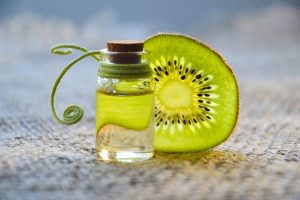All about dental implants? Search no further
Dental implants offer an innovative solution for those seeking to restore missing teeth, closely mimicking the function and appearance of natural teeth. They focus on osseointegration, providing enhanced stability and preventing bone loss while improving oral health. Although the initial cost is higher than traditional options, their durability and superior aesthetics make them a wise investment. Understanding the various aspects and preparation involved is essential for ensuring long-term success and satisfaction with Forest and Ray dental implants. What are dental implants? We reviewed this excellent article of Forest & Ray, and thought we will make a shorter teaser of the full that you can read on their website.
Before going further here are some of the topics they cover:
1. What are dental implants? (video)
2. Why are dental implants so successful?
3. What is osseointegration?
4. Am I a suitable candidate for getting implants?
5. What if I do not have sufficient jaw bone available?
…
22! All together 22 important and interesting questions answered.
Understanding the Basics of Dental Implants
When it comes to dental restorations, understanding the basics of dental implants is essential for anyone considering this advanced tooth replacement option.
Dental implants offer numerous benefits, serving as a highly effective solution for missing teeth. One of the primary dental implant benefits is their ability to mimic natural teeth in both function and appearance, providing a durable and long-lasting solution.
The success of dental implants largely depends on the osseointegration process, where the implant fuses with the jawbone, creating a stable foundation for artificial teeth. This process not only guarantees the longevity of the implant but also contributes to improved oral health by preventing bone loss.
Evaluating Qualifications for Implant Candidacy
Who qualifies for dental implants? Determining implant eligibility involves a detailed candidate assessment. This evaluation considers several factors to guarantee the success of the procedure.
A suitable candidate typically possesses sufficient jawbone density, as bone structure plays a vital role in stabilizing the implant. Oral health is another important consideration; candidates should have healthy gums and be free from periodontal disease.
General health conditions, such as uncontrolled diabetes or heart disease, may influence eligibility, necessitating careful examination. Additionally, lifestyle choices, such as smoking, can adversely affect healing and success rates.
Dentists use diagnostic tools, including X-rays and 3D imaging, to assess bone quality and structure. Ultimately, a thorough assessment is essential to identify individuals who can benefit from dental implants effectively.
Comparing Costs and Benefits of Dental Implants
While dental implants represent a considerable investment, their long-term benefits often justify the cost. A cost analysis reveals that the initial expense of implants can be higher than other dental solutions.
However, when considering the lifespan of implants, typically spanning decades, they often prove more economical. Traditional dentures or bridges may require frequent replacements or adjustments, adding to their overall cost over time.
In a benefit assessment, dental implants offer superior functionality and aesthetics, closely mimicking natural teeth. They preserve jawbone integrity, unlike other options that can lead to bone loss.
Additionally, implants provide enhanced comfort and stability, considerably improving oral health and quality of life. Consequently, the upfront cost may be outweighed by the lasting advantages they offer.

Exploring the Technical Aspects of Implant Types and Procedures
Delving into the technical aspects of dental implants reveals a fascinating array of types and procedures, each meticulously designed to meet specific patient needs.
Implant technology has advanced considerably, offering options such as endosteal and subperiosteal implants, each serving different structural and anatomical requirements.
The procedures involve careful planning and precision, tailored to enhance patient experiences and guarantee long-term success.
Innovations in materials and techniques have made implants more accessible and reliable, with options like immediate loading and mini implants broadening the spectrum of possibilities.
Each type, from conventional to zygomatic implants, is chosen based on bone quality and patient-specific conditions, highlighting the personalized approach in modern dentistry.
This intricate balance of technology and patient-centered care defines the current landscape of dental implantology.

Preparing for and Managing Life With Your New Dental Implants
Steering the journey of acquiring dental implants involves not only understanding the procedure but also preparing for the transformation they bring to daily life. Adequate preparation and knowledge about implant maintenance are essential for long-term success.
Patients should adhere to their dentist’s recovery tips, which often include soft diets, careful oral hygiene practices, and avoiding strenuous activities. During the initial recovery phase, swelling and discomfort are common, necessitating the use of prescribed pain management techniques. Regular follow-ups guarantee the implants are integrating well.
Implant maintenance involves daily brushing, flossing, and periodic professional cleanings to prevent plaque buildup. Understanding these aspects helps individuals adjust seamlessly into life with dental implants, ensuring they reap the full benefits of their new smile.
Conclusion
In conclusion, dental implants serve as a highly effective solution for individuals with missing teeth, offering a natural appearance and functional stability through osseointegration. While the upfront cost is higher than traditional dental solutions, the long-term benefits of durability and aesthetic appeal justify the investment. Ensuring success with dental implants requires thorough preparation, diligent maintenance, and regular follow-up appointments. Ultimately, dental implants greatly enhance oral health and quality of life for those who are suitable candidates.



